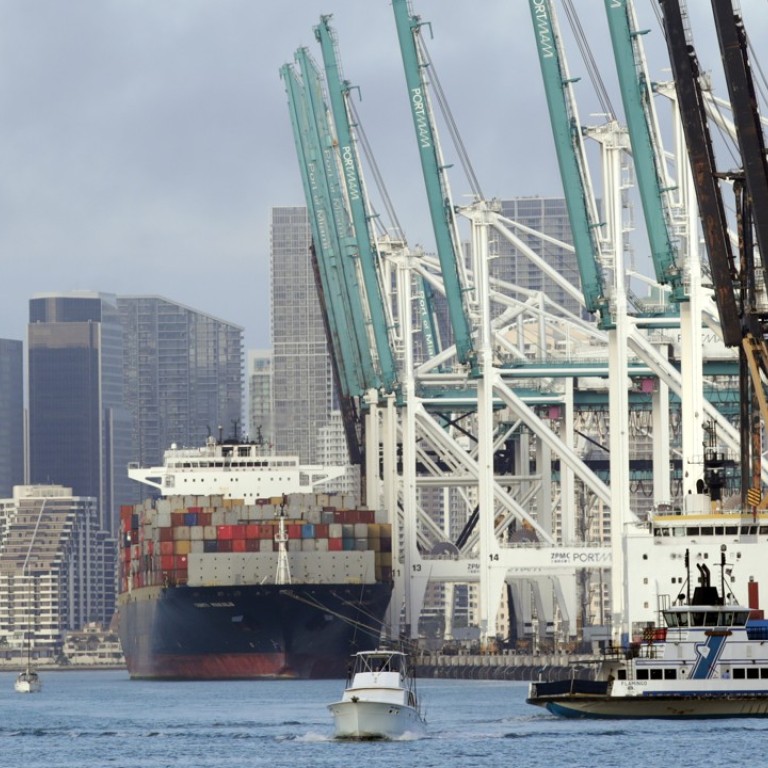
US trade deficit is at its widest monthly and yearly levels since 2008 recession
The US trade deficit widened to the biggest monthly and annual levels since the last recession, underscoring the inherent friction in President Donald Trump’s goal of narrowing the gap while enjoying faster economic growth.
The deficit increased 5.3 per cent in December to a larger-than-expected US$53.1 billion, the widest since October 2008, as imports outpaced exports, the Commerce Department reported on Tuesday. For all of 2017, the goods-and-services gap grew 12 per cent to US$566 billion, the biggest since 2008.
The trend may extend into this year. Solid consumer spending and business investment – assuming they hold up amid the recent stock-market rout – will fuel demand for foreign-made merchandise.
Globally, the US goods trade deficit widened 8.1 per cent in 2017 from the previous year to US$796.15 billion, hitting the highest level since 2008. Exports grew 6.6 per cent to US$1.5 trillion and imports climbed 7.1 per cent to US$2.3 trillion.

While improving overseas growth and a weaker dollar bode well for exports, Trump’s efforts to seek more favourable terms with US trading partners remain a work in progress, and his tax-cut legislation may cause the deficit to widen further.
One of the central themes of Trump’s presidential campaign was a pledge to level the playing field for American workers.
In his first State of the Union address last week, Trump promised to “fix bad trade deals and negotiate new ones,” and he recently placed tariffs on imported solar panels and washing machines, sparking concern the US may prompt trade wars.
With two of Trump’s main targets, China and Mexico, the imbalances worsened in 2017. America’s merchandise-trade gap with China, the world’s second-biggest economy, widened 8.1 per cent in 2017 to a record US$375.2 billion.
The US goods trade deficit with Mexico rose 10 per cent last year to hit US$71.06 billion, the highest since 2007, the Commerce Department said.
The total for Japan hit US$68.85 billion in 2017, the third-largest country from which the United States generated a trade deficit, the data showed.
The administration is currently renegotiating the North American Free Trade Agreement with Mexico and Canada, and Trump has repeatedly threatened to withdraw from the pact.
The international trade balance deteriorated further in December as import growth continued to exceed that of exports.
In December, a strong increase in imports possibly resulted from some suppliers rushing goods into the country at year end, fearing import tariffs in 2018.
A larger widening of the trade deficit in the fourth quarter than the previous data were indicating suggests net trade could be a larger drag on economic growth than the previously estimated.
Exports and imports of goods account for about three-fourths of America’s total trade; the US typically runs a deficit in merchandise trade and a surplus in services.



